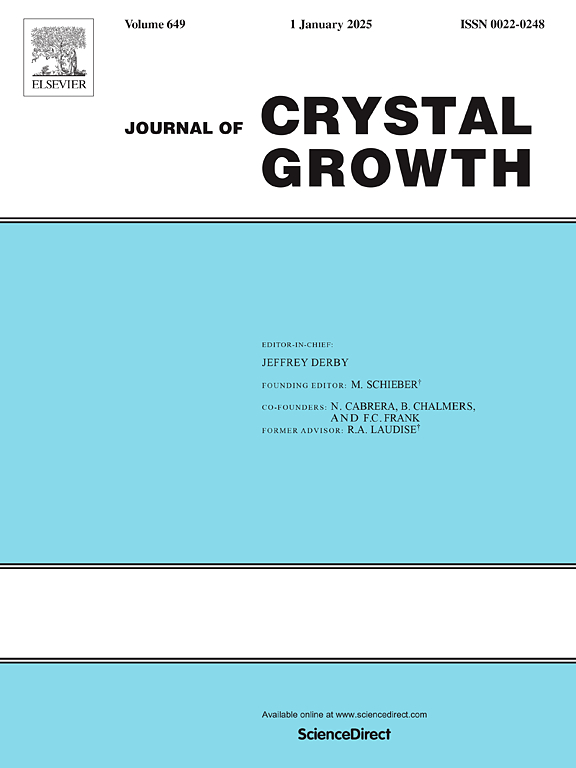Crystals grown from precipitant-free ultralow concentrate ATP (adenosine triphosphate) solutions with extremely low DC potential
IF 2
4区 材料科学
Q3 CRYSTALLOGRAPHY
引用次数: 0
Abstract
ATP crystals are grown under bare conditions of DC potential, ionic strength, and solute concentration without a precipitant. A 1.6 V cm−1 DC field supplied internally to aqueous solutions containing as low as 0.003 mg mL−1 ATP in 1 mM phosphate buffer appears sufficient for the growth of orthorhombic crystals. The effect of the electric field (EF) on molecular ionization and monomer → aggregate transition are analyzed by UV–visible and fluorescence spectroscopy. The aggregation process starts in less than an hour after turning the DC field on, and the aggregates appear to nucleate and enter the crystal phase in hours or days. Processes innate to electrochemistry are minimized or do not interfere with the interaction of the EF with the molecular dipole, forcing predominant aggregation in the solution itself. The crystals are imaged and indexed using electron microscopy and powder X-ray diffractogram. A series of experiments in which the amount crystallized as a function of initial concentration of ATP in the 0.003–13 mg mL−1 range was determined yields an indicator isotherm of crystallization at 298 K that shows that the amount of ATP used up to produce the crystalline phase decreases rapidly with the initial concentration used.
晶体从无沉淀的超低浓缩ATP(三磷酸腺苷)溶液中生长,具有极低的直流电位
ATP晶体是在直流电位、离子强度和溶质浓度的裸条件下生长的,没有沉淀剂。在1毫米磷酸盐缓冲液中,向含有低至0.003 mg mL−1 ATP的水溶液内部提供1.6 V cm−1直流场,足以生长正交晶体。利用紫外可见光谱和荧光光谱分析了电场对分子电离和单体→聚集体跃迁的影响。在打开直流电场后不到一小时内,聚集过程就开始了,聚集体在数小时或数天内出现成核并进入晶体阶段。电化学固有的过程被最小化或不干扰EF与分子偶极子的相互作用,迫使溶液本身主要聚集。用电子显微镜和粉末x射线衍射仪对晶体进行了成像和索引。在0.003-13 mg mL−1范围内,测定了ATP初始浓度与结晶量的函数关系的一系列实验,得出了298 K时结晶的指示等温线,该等温线表明,用于产生结晶相的ATP的量随着初始浓度的增加而迅速减少。
本文章由计算机程序翻译,如有差异,请以英文原文为准。
求助全文
约1分钟内获得全文
求助全文
来源期刊

Journal of Crystal Growth
化学-晶体学
CiteScore
3.60
自引率
11.10%
发文量
373
审稿时长
65 days
期刊介绍:
The journal offers a common reference and publication source for workers engaged in research on the experimental and theoretical aspects of crystal growth and its applications, e.g. in devices. Experimental and theoretical contributions are published in the following fields: theory of nucleation and growth, molecular kinetics and transport phenomena, crystallization in viscous media such as polymers and glasses; crystal growth of metals, minerals, semiconductors, superconductors, magnetics, inorganic, organic and biological substances in bulk or as thin films; molecular beam epitaxy, chemical vapor deposition, growth of III-V and II-VI and other semiconductors; characterization of single crystals by physical and chemical methods; apparatus, instrumentation and techniques for crystal growth, and purification methods; multilayer heterostructures and their characterisation with an emphasis on crystal growth and epitaxial aspects of electronic materials. A special feature of the journal is the periodic inclusion of proceedings of symposia and conferences on relevant aspects of crystal growth.
 求助内容:
求助内容: 应助结果提醒方式:
应助结果提醒方式:


